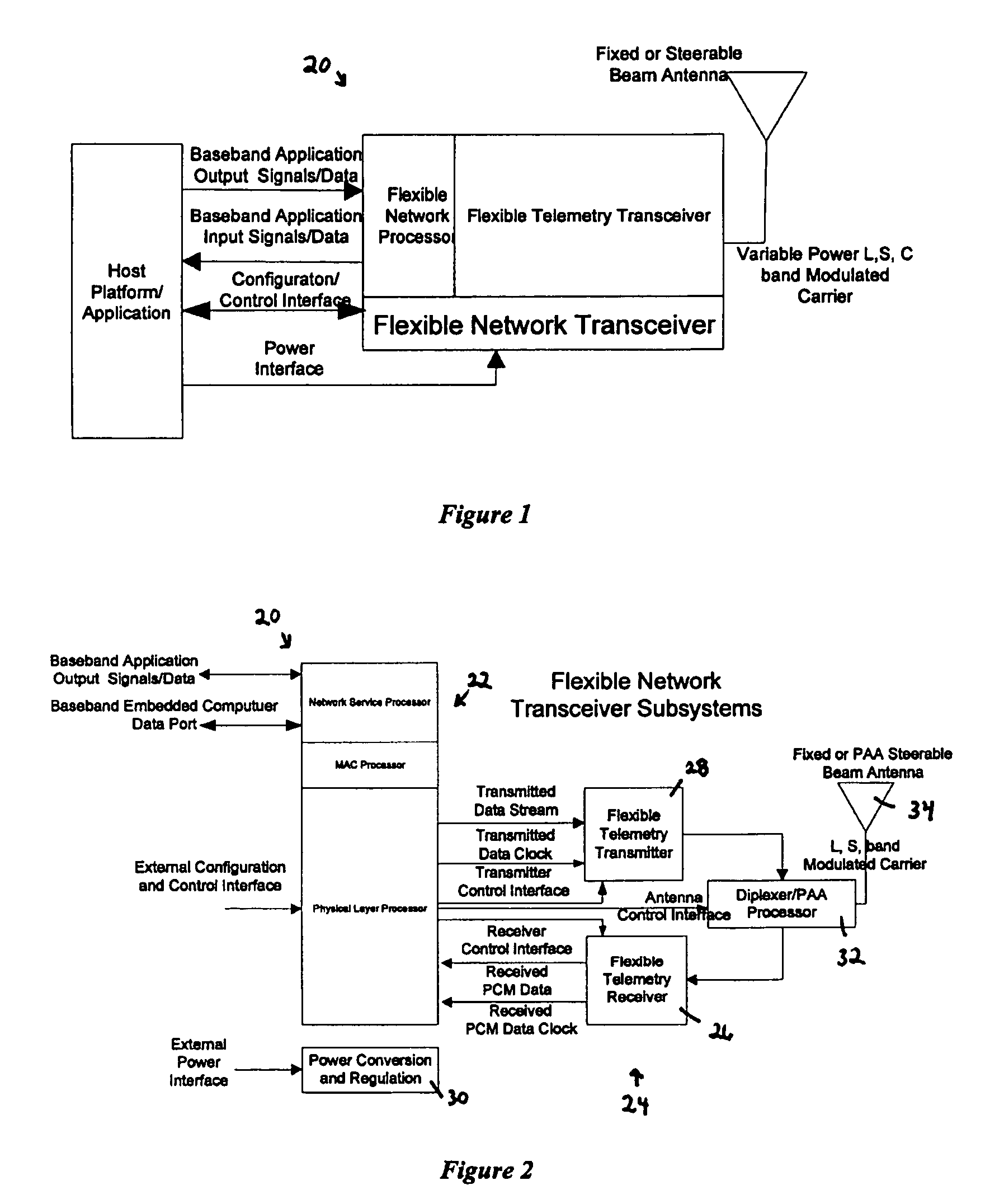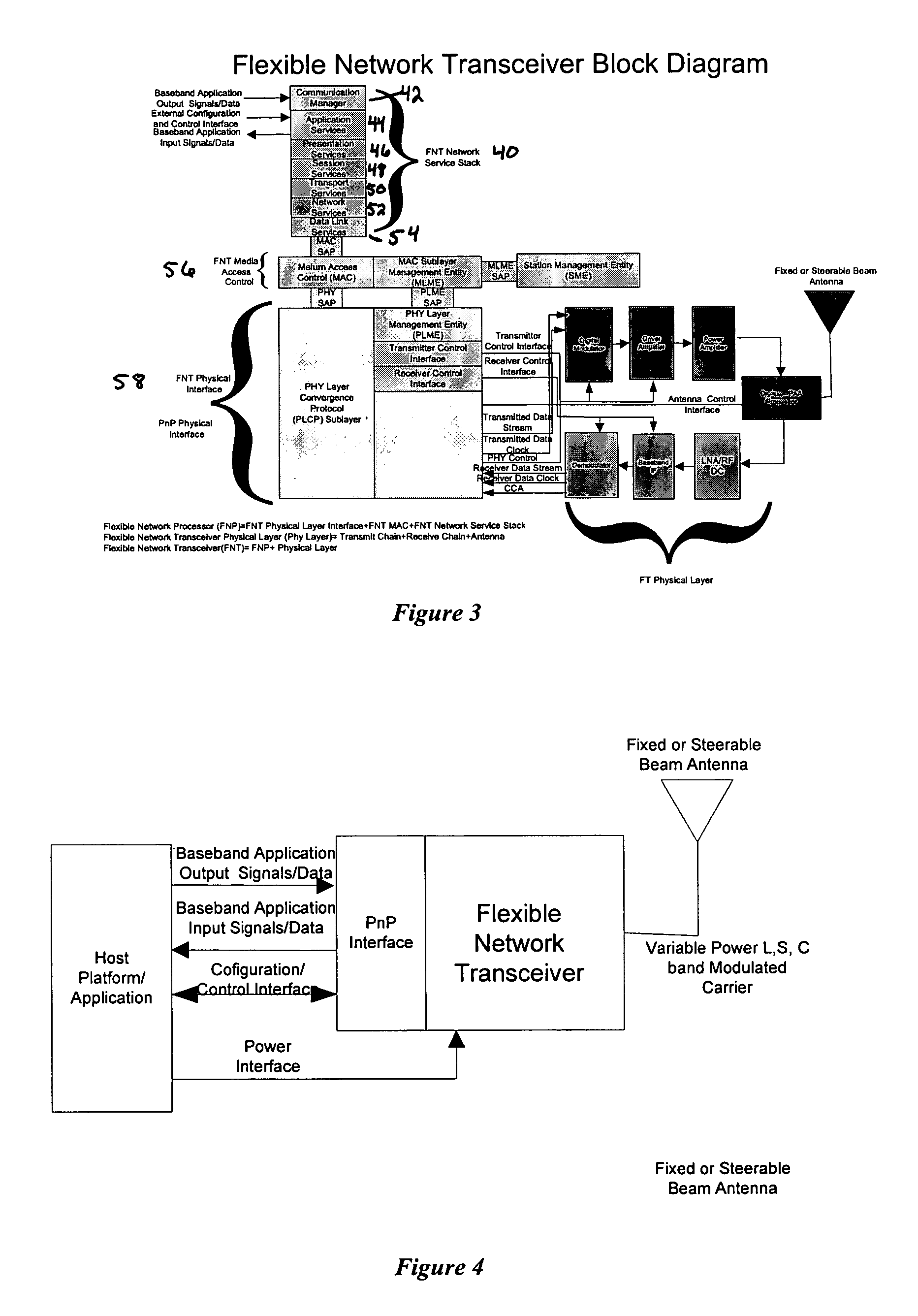Flexible network wireless transceiver and flexible network telemetry transceiver
a flexible network and wireless transceiver technology, applied in the field of flexible network wireless transceiver and flexible network telemetry transceiver, can solve the problems of affecting the overall communication and information exchange, affecting the interoperability of the global network, and several smart and dumb munitions and missiles used by the armed forces are not integrated into the global grid. , to achieve the effect of improving jamming margin, high data rate and robust performan
- Summary
- Abstract
- Description
- Claims
- Application Information
AI Technical Summary
Benefits of technology
Problems solved by technology
Method used
Image
Examples
Embodiment Construction
, below.
BRIEF DESCRIPTION OF THE DRAWINGS
[0042]A preferred embodiment of the present invention is described in detail below with reference to the attached drawing figures, wherein:
[0043]FIG. 1. Flexible Telemetry Network Application Specific FNT Architecture. The FNT functions to provide communication services between distributed mobile host applications, it provides wireless transmit, receive, antenna, and signal processing to translate baseband data and control signaling that it can propagate across the wireless channel. The host application interface support transfer of synchronization, data, and control signals. The wireless channel interface support transfer of TEM waves to and from the wireless channel.
[0044]FIG. 2. Flexible Network Transceiver (FNT) Subsystem Architecture. Major FNT subsystems include the network processor, distributed transmitter, flexible telemetry receiver, and the phased array antenna. The major interfaces between these functions are also shown.
[0045]FIG....
PUM
 Login to View More
Login to View More Abstract
Description
Claims
Application Information
 Login to View More
Login to View More - R&D
- Intellectual Property
- Life Sciences
- Materials
- Tech Scout
- Unparalleled Data Quality
- Higher Quality Content
- 60% Fewer Hallucinations
Browse by: Latest US Patents, China's latest patents, Technical Efficacy Thesaurus, Application Domain, Technology Topic, Popular Technical Reports.
© 2025 PatSnap. All rights reserved.Legal|Privacy policy|Modern Slavery Act Transparency Statement|Sitemap|About US| Contact US: help@patsnap.com



